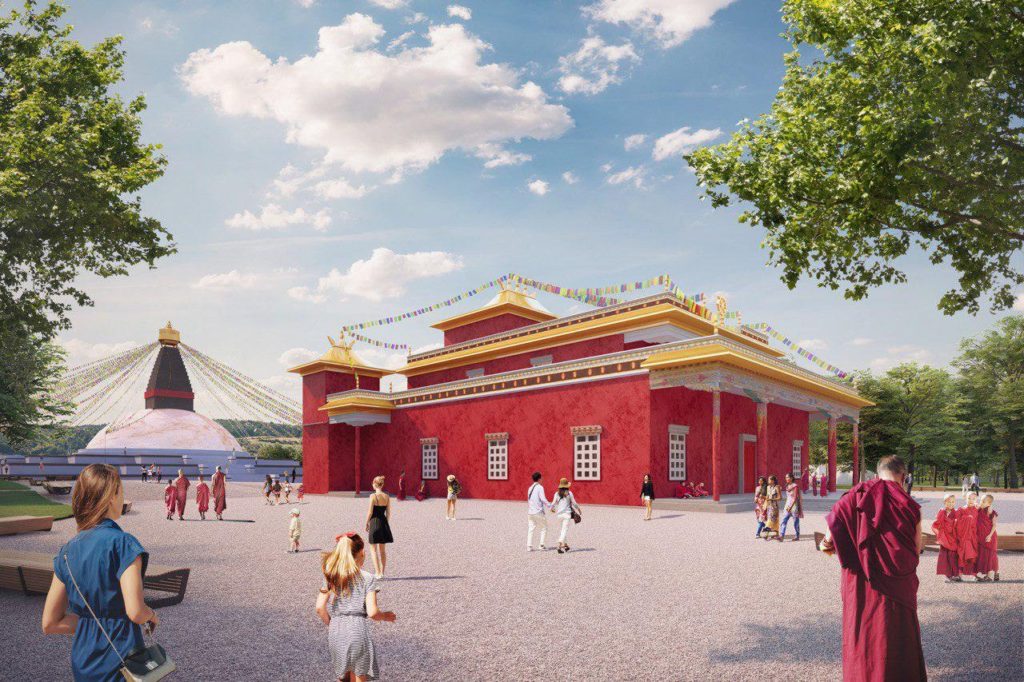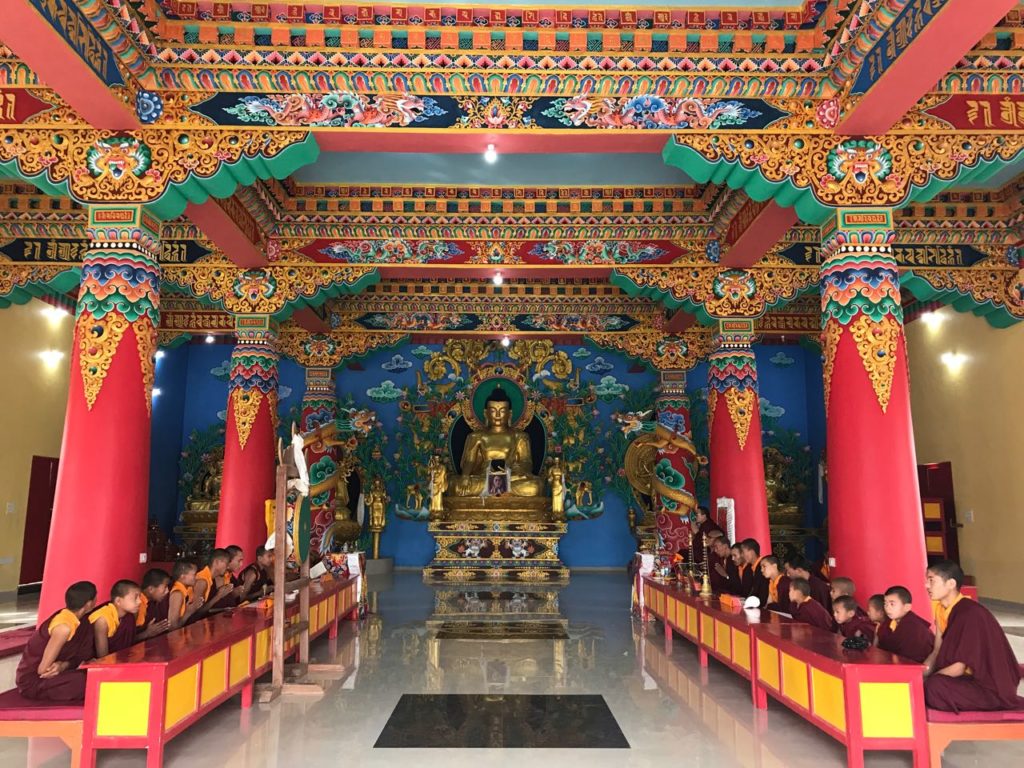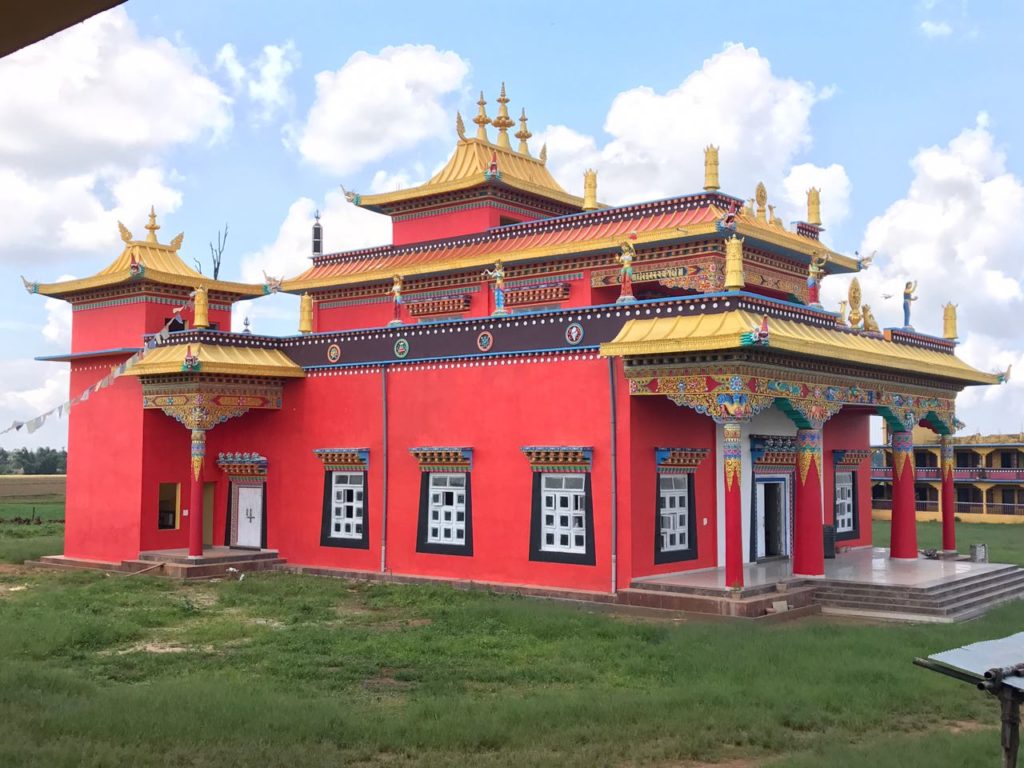Tertön Gönpa
Tertön Gönpa in Czech Republic
Tertön Foundation is building in Czech republic an extraordinary gönpa. With its ability to host 800 practitioners it will be unique not only because of its size, but also because of the traditional Tibetan style. Our gönpa will be the first shrine of this kind in Czech republic, a beating heart of our new Buddhist centre.

Gönpa (Tib. དགོན་པ [gönpa]) – denotes in Tibetan a remote area or a place for Buddhist practice far away from civilisation. In today’s terms a gönpa is understood as a monastery as well as a room dedicated for meditation.
Use of the gönpa
Practitioners will find in our gönpa a calm place for their individual buddhist practice. It will also provide space for common meditations guided by experienced teachers as well as for monks to conduct their daily rituals of offering to Buddhas and chanting wishing prayers for general peace and understanding.
Gönpa is also a place of giving Buddhist teachings, the Dharma. In such a traditional setting students are naturally motivated to attentively and correctly listen. For this reason we will organise in our gönpa regular lectures and explanations for both experienced practitioners as well as newcomers. In this way students will have an opportunity to create close bonds with teachers and there will emerge an undisturbed place for perfecting the understanding and dissolving doubts.
Gönpa symbolism
Beside its practical uses, gönpa provides also a chance to directly understand one’s mind though symbols. If we keep our mind open we can receive a very strong positive feedback just by mere stepping into a gönpa.
During the building process of these shrines the supervising lamas pay a close attention so that each and every gönpa contains representations of Buddha’s body, speech and mind. Buddha’s body is symbolised by statues and frescos on the walls and also on thankas, the Tibetan roll-up canvas paintings. The speech of the Buddha, the Dharma, is contained in Buddhist books and scriptures and every gönpa has thus a complete Tibetan Buddhist canon (Tib. kangyur). And finally Buddha’s mind is symbolised by stupas and for this reason we can often find several of these monuments in gönpas.
The walls of gönpas are often fully painted in traditional Tibetan style. The frescos depict usually the life of Buddha Shakyamuni or represent the forms of meditation deities. Their aim is to help the students to visualize the meditation forms properly and that is why the frescos are executed with perfect geometric proportions, shapes and colours.
Gönpas, the centres of Buddhist sanghas, were for many centuries the hearts of Buddhist activities in Tibet and many other Buddhist cultures. Buddhist communities start there with their studies, recitation and memorization of the precious texts before dawn and having only small breaks for tea and meals, they often continued until nine o’clock in the evening. Among the communities of so called yogis, lay practitioners with very close contacts to their lamas, it was not uncommon that they were not stopping their practices for months and continued even in nights. The lamas and scholars have been collecting in gönpas texts and manuscripts for centuries and were meticulously composing there new commentaries for their disciples. The disciples could thus in turn reach the fruits of their efforts and were becoming themselves scholars and realised masters of meditation.
The gönpas built in Nepal and India


